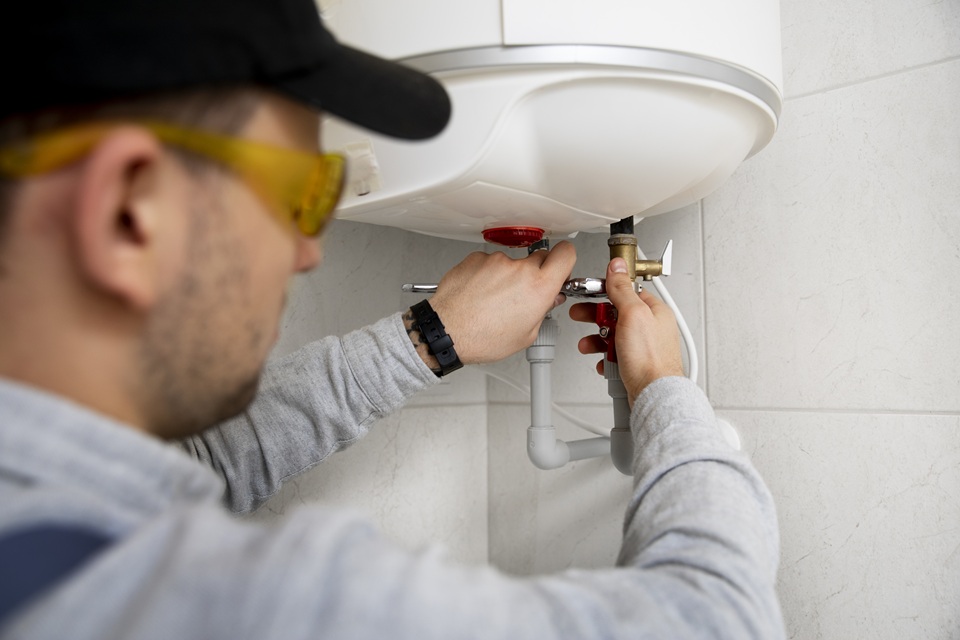Key Takeaways:
- Routine maintenance maximizes the efficiency and longevity of your water heater.
- Replacing older models with energy-efficient units cuts energy use and costs.
- Smart controls and technology streamline usage, automatically saving energy.
- Federal tax credits help offset the cost of investing in high-efficiency water heaters.
Ensuring your water heater operates at peak efficiency is crucial for both reducing household energy consumption and managing costs in today’s modern homes. Whether you’re looking to maximize the efficiency of your existing water heater or considering an upgrade to a more efficient unit, a few simple strategies can make a significant difference. Stay ahead of rising energy costs—and enjoy consistent, reliable hot water—by investing in expert electric water heater services in Lehi and implementing targeted efficiency practices in your household routine.
With advances in technology and government incentives for sustainable living, homeowners now have a wealth of tools at their disposal to enhance the performance of their water heaters. Incorporating smart controls, regular maintenance, and insulation techniques not only saves money but also extends the lifespan of your appliance. The following guide provides actionable tips designed for busy families and modern homeowners seeking optimal results.
Table of Contents
Regular Maintenance For Optimal Performance
Periodic maintenance is paramount for keeping your water heater performing efficiently. Over time, minerals and sediment settle at the bottom of the tank, hindering the heating process and potentially damaging the unit. Annual tank flushing removes these impurities, ensuring your system maintains high output and avoids premature breakdowns. Inspecting the anode rod and replacing it as needed will protect the tank from rust and corrosion, further extending the appliance’s useful life.
Upgrading To Energy-Efficient Models
Modern water heaters are built with efficiency in mind, often featuring advanced insulation, improved heating mechanisms, and environmentally friendly refrigerants. High-efficiency heat pump water heaters, for example, use substantially less electricity compared to traditional models. According to the U.S. Department of Energy, switching to an ENERGY STAR-rated water heater can result in significant reductions in utility bills and carbon emissions over time. These innovative systems pay for themselves in the long run, particularly for families with high hot water demand.
Implementing Smart Technology
Smart water heaters bring a new level of control and convenience to modern homes. With Wi-Fi-enabled thermostats, homeowners can fine-tune water temperatures and set usage schedules directly from their smartphones. Many models also feature monitoring capabilities, instantly alerting users to leaks or inefficiencies that could otherwise go unnoticed. These advanced controls make it easy to avoid wasting energy—especially during vacations or periods of low usage—while ensuring hot water is always available on demand. Mobile apps can deliver real-time analytics, helping you spot and correct inefficient habits before they escalate into higher bills or appliance wear.
Utilizing Tax Credits & Incentives
Making the switch to a high-efficiency water heater is more affordable than ever, thanks to generous government incentives. The Inflation Reduction Act enables homeowners to claim up to $2,000 in tax credits when they install qualifying heat pump water heaters before the program’s expiration at the end of 2025. This significant benefit is claimed during your federal income tax filing, substantially reducing the initial investment cost.
Insulating Your Water Heater & Pipes
Reducing heat loss from your water heater and the pipes that deliver hot water is among the simplest and most cost-effective energy-saving measures you can take. Insulating blankets designed for water heater tanks are available at most hardware stores and are easy to install. Likewise, slip-on foam insulation for hot water pipes helps prevent heat from dissipating before it reaches your taps, reducing the need for reheating. According to the Department of Energy, tank insulation can cut standby heat losses by 25%–45% and save around 7%–16% in overall water heating costs.
Lowering The Water Heater Temperature
Adjusting your water heater thermostat to 120°F (49°C) strikes an ideal balance between comfort and safety, while also conserving energy. Lower temperatures not only reduce the risk of accidental scalding, especially for households with children, but also reduce standby losses. In fact, every 10°F reduction can result in up to a 5% savings on water heating costs, making this a highly effective adjustment for virtually any household.
Considering Tankless Water Heaters
Tankless, or on-demand, water heaters heat water only as it is needed, rather than storing it in a tank for later use. This efficient design eliminates the standby heat loss associated with traditional systems and can deliver energy savings of up to 40% for homes with lower hot water needs. Homes with greater hot water demand can also benefit, as these units provide a continuous supply of hot water while significantly reducing long-term energy usage.
Conclusion
Enhancing the efficiency of your water heater requires a holistic approach that encompasses routine maintenance, thoughtful upgrades, smart technology integration, and proper insulation. By applying these tried-and-true tips, modern homeowners can enjoy the luxury of consistent hot water while minimizing their environmental impact and utility costs. Seizing available federal tax credits and incentives further helps to justify the cost of transitioning to energy-efficient solutions, making them a smart investment for your home and the environment.


